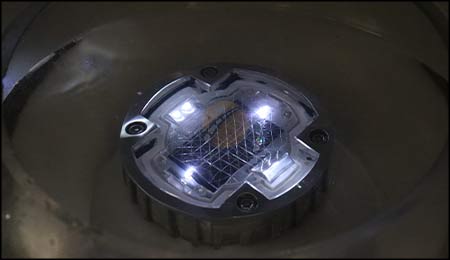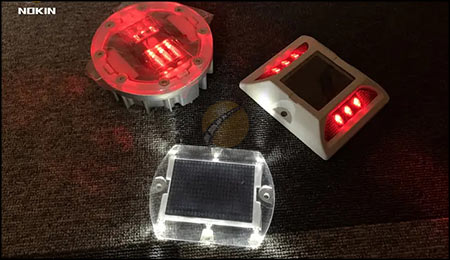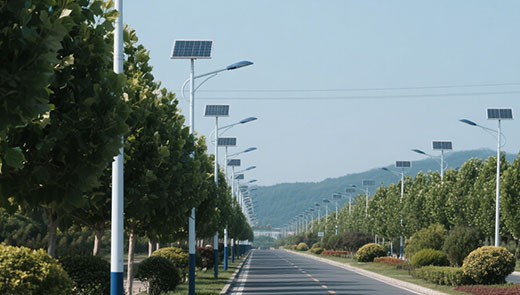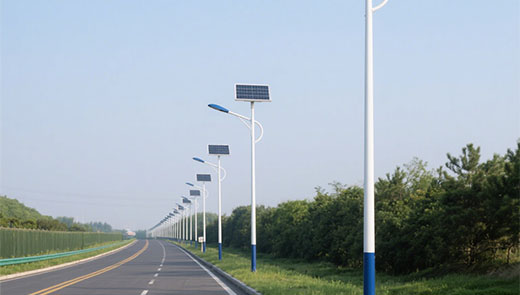Frequently Asked Questions About Road studs: What You Need to Know
Sep 23, 2024
Road studs, also known as tire studs or stud strips, are a common traffic control and security measure used to enforce direction control, prevent unauthorized access, or stop vehicles. They are typically installed in parking lots, restricted areas, toll booths, or at security checkpoints. For many, road studs may seem intimidating or confusing, leading to a number of questions about their purpose, function, and safety. In this article, we will answer some of the most frequently asked questions about road studs.
Some road studs are designed as temporary, portable devices (often called stud strips) used by law enforcement to stop fleeing vehicles.
When a vehicle drives over the studs in the wrong direction, the force of the weight pushes the studs upward, causing them to pierce the tires, resulting in an immediate flat or slow tire deflation. This prevents the vehicle from continuing further and forces it to stop.
However, road studs are very effective at stopping vehicles that try to move in the wrong direction. Drivers should always pay attention to directional signs and road markings in areas where road studs are installed to avoid damaging their vehicles.
It’s important to always be cautious in areas with road studs and follow the direction signs to avoid costly tire damage.
For law enforcement, portable stud strips are legal and commonly used in police chases to disable vehicles. However, the use of road studs in public streets or unauthorized areas without proper signage or permission is not legal and could lead to penalties or lawsuits.
It’s important to provide clear signage that warns drivers of the presence of road studs to avoid accidental damage or injury. Proper installation is essential to ensure the road studs function correctly and do not pose a hazard to authorized vehicles.
Nonetheless, for everyday vehicles, road studs are highly effective at disabling tires and stopping unauthorized or illegal movement.
In cases where road studs need to be removed entirely, such as during road maintenance or temporary traffic changes, the studs can be lifted or disassembled depending on the installation design.
In law enforcement situations, stud strips are typically deployed to slow down or disable fleeing vehicles, reducing the risk of high-speed chases.
Road studs are a highly effective tool for controlling traffic direction, preventing unauthorized access, and enhancing security in a wide variety of settings. By understanding how they work and following proper traffic guidelines, drivers can avoid damage to their vehicles while benefiting from the safety and security road studs provide. With their wide-ranging applications in parking lots, security checkpoints, and law enforcement, road studs continue to play an important role in maintaining safety and order on the roads.
1. What Are Road studs?
Road studs are sharp, metal studs or teeth that are embedded in a road surface to control traffic flow and enhance security. These studs are usually retractable and are designed to puncture or damage the tires of vehicles that attempt to drive in the wrong direction or enter restricted areas without authorization. They are commonly used in parking lots, military bases, gated communities, and at toll booths to prevent reverse driving or unauthorized entry.Some road studs are designed as temporary, portable devices (often called stud strips) used by law enforcement to stop fleeing vehicles.
2. How Do Road studs Work?
Most solar road studs are directional, meaning they are designed to allow vehicles to pass over them safely in one direction but will puncture the tires of vehicles moving in the opposite direction. For example, in a parking lot exit lane, vehicles driving forward over the studs will not be affected, but if a vehicle tries to back up or enter against traffic, the studs will puncture the tires.When a vehicle drives over the studs in the wrong direction, the force of the weight pushes the studs upward, causing them to pierce the tires, resulting in an immediate flat or slow tire deflation. This prevents the vehicle from continuing further and forces it to stop.
3. Where Are Road studs Commonly Used?
Road studs are installed in various locations for traffic control, security, and safety purposes. Some common places where solar studs are used include:- Parking lots and garages: To prevent vehicles from entering or exiting improperly or driving in reverse in one-way lanes.
- Security checkpoints: At military bases, government buildings, or private facilities to prevent unauthorized entry.
- Toll booths and controlled-access highways: To prevent drivers from reversing or entering without paying tolls.
- Border crossings: To prevent illegal entry or escape attempts.
- Prison perimeters: To prevent unauthorized vehicle access or escapes.
- Law enforcement: stud strips are often used by police during high-speed pursuits to stop vehicles.
4. Are Road studs Safe for Legal Traffic?
Yes, road studs are designed to be safe for vehicles that follow the correct traffic flow. The studs are directional and retract when a vehicle passes over them in the intended direction, allowing it to proceed without damage. As long as drivers follow the posted signs and obey traffic rules, road studs will not harm their tires.However, road studs are very effective at stopping vehicles that try to move in the wrong direction. Drivers should always pay attention to directional signs and road markings in areas where road studs are installed to avoid damaging their vehicles.
5. What Happens If I Accidentally Drive Over Road studs in the Wrong Direction?
If a vehicle accidentally drives over solar-powered road studs in the wrong direction, the studs will puncture the tires, typically causing a rapid or slow deflation. The extent of the damage depends on the design of the studs and the speed at which the vehicle is moving. In most cases, the tires will need to be replaced, as the punctures caused by road studs are usually too severe to be repaired.It’s important to always be cautious in areas with road studs and follow the direction signs to avoid costly tire damage.
6. Are Road studs Legal?
Yes, road studs are legal and widely used for traffic control, security, and law enforcement purposes. However, they must be installed and used according to local regulations and safety guidelines. In controlled environments such as parking lots, toll booths, and secured facilities, road studs are typically marked with clear signs to inform drivers of their presence.For law enforcement, portable stud strips are legal and commonly used in police chases to disable vehicles. However, the use of road studs in public streets or unauthorized areas without proper signage or permission is not legal and could lead to penalties or lawsuits.
7. Can Road studs Be Installed on Private Property?
Yes, road studs can be installed on private property, but they should be used responsibly and in accordance with local laws and safety standards. Property owners, businesses, or security agencies can install road studs to control access and prevent unauthorized entry or reverse driving in parking lots, private roads, or gated areas.It’s important to provide clear signage that warns drivers of the presence of road studs to avoid accidental damage or injury. Proper installation is essential to ensure the road studs function correctly and do not pose a hazard to authorized vehicles.
8. Do Road studs Damage All Types of Vehicles?
Road studs are designed to puncture the tires of standard vehicles such as cars, trucks, and SUVs. In most cases, they are effective against vehicles with rubber tires. However, certain specialized vehicles, such as military or armored vehicles, may have tires that are resistant to punctures or can continue operating even after being damaged by studs.Nonetheless, for everyday vehicles, road studs are highly effective at disabling tires and stopping unauthorized or illegal movement.
9. Can Road studs Be Removed or Deactivated?
Yes, many road stud systems are retractable or can be deactivated as needed. For example, security personnel at a checkpoint can lower the studs to allow authorized vehicles to pass through without damage. In automated systems, the studs may retract when a vehicle is granted access through a gate or after payment is made at a toll booth.In cases where road studs need to be removed entirely, such as during road maintenance or temporary traffic changes, the studs can be lifted or disassembled depending on the installation design.
10. Are Road studs Effective at Stopping High-Speed Vehicles?
While solar road stud lights are effective at disabling tires, they are not always guaranteed to stop a high-speed vehicle instantly. In some cases, a vehicle may continue to move for a short distance even after its tires have been punctured, depending on the speed and momentum. However, the deflation caused by the studs will make it difficult for the driver to maintain control, eventually forcing the vehicle to stop.In law enforcement situations, stud strips are typically deployed to slow down or disable fleeing vehicles, reducing the risk of high-speed chases.







